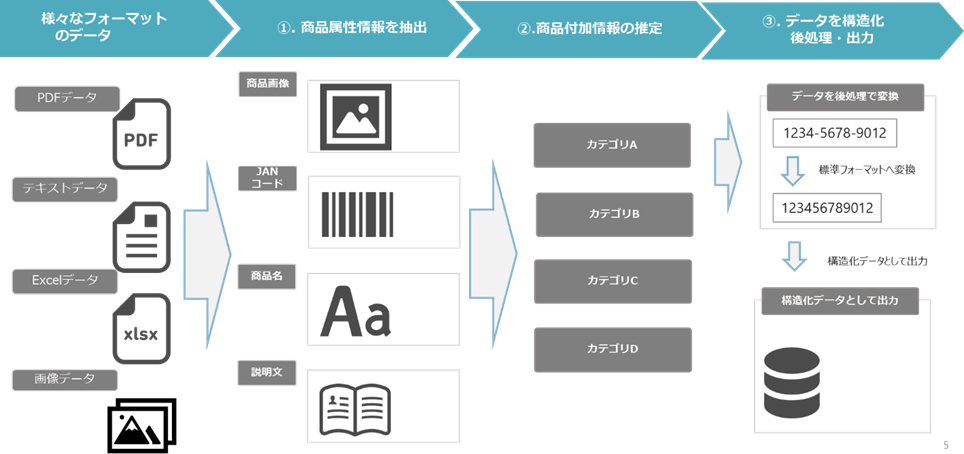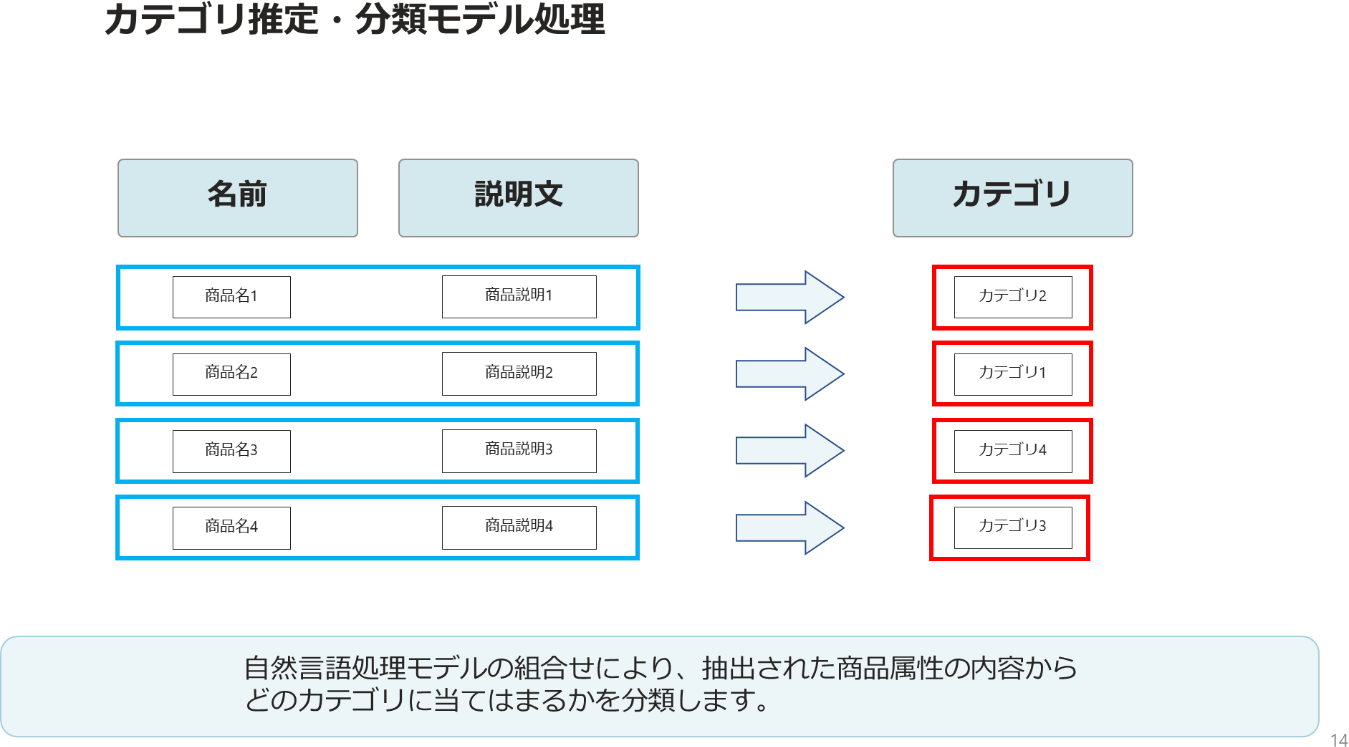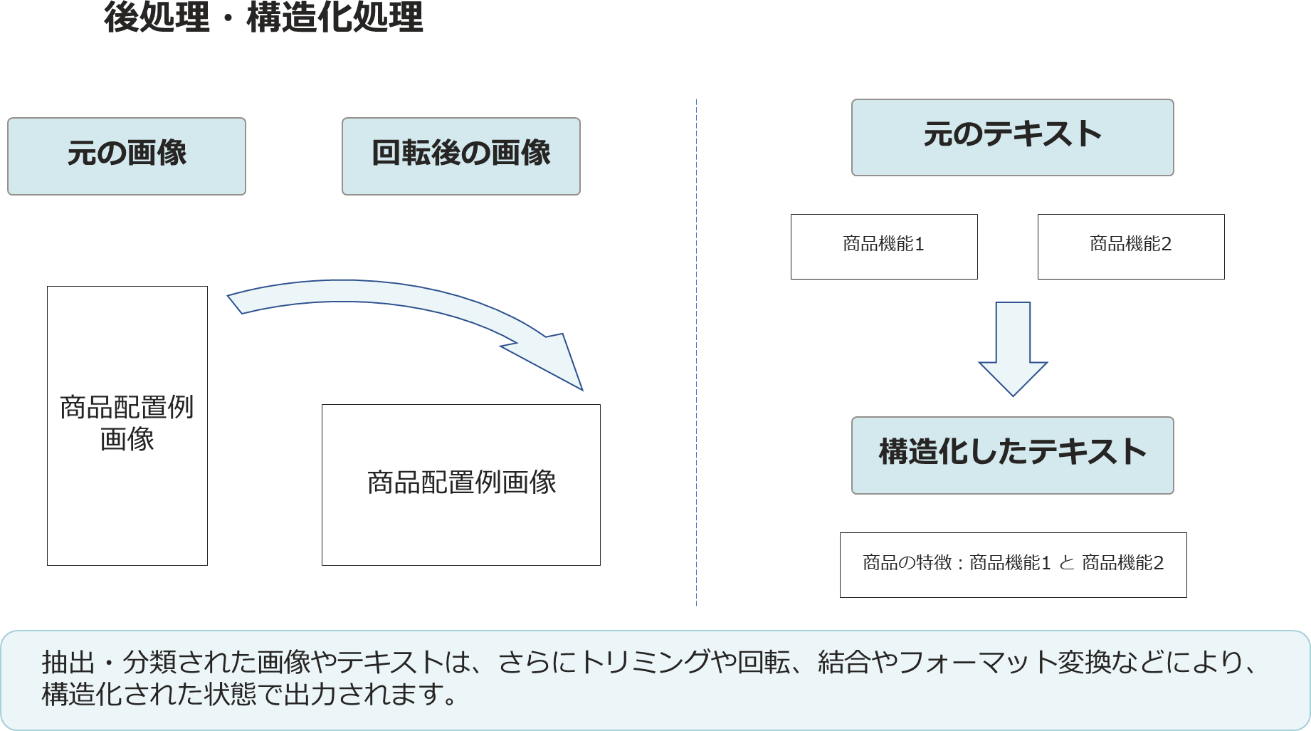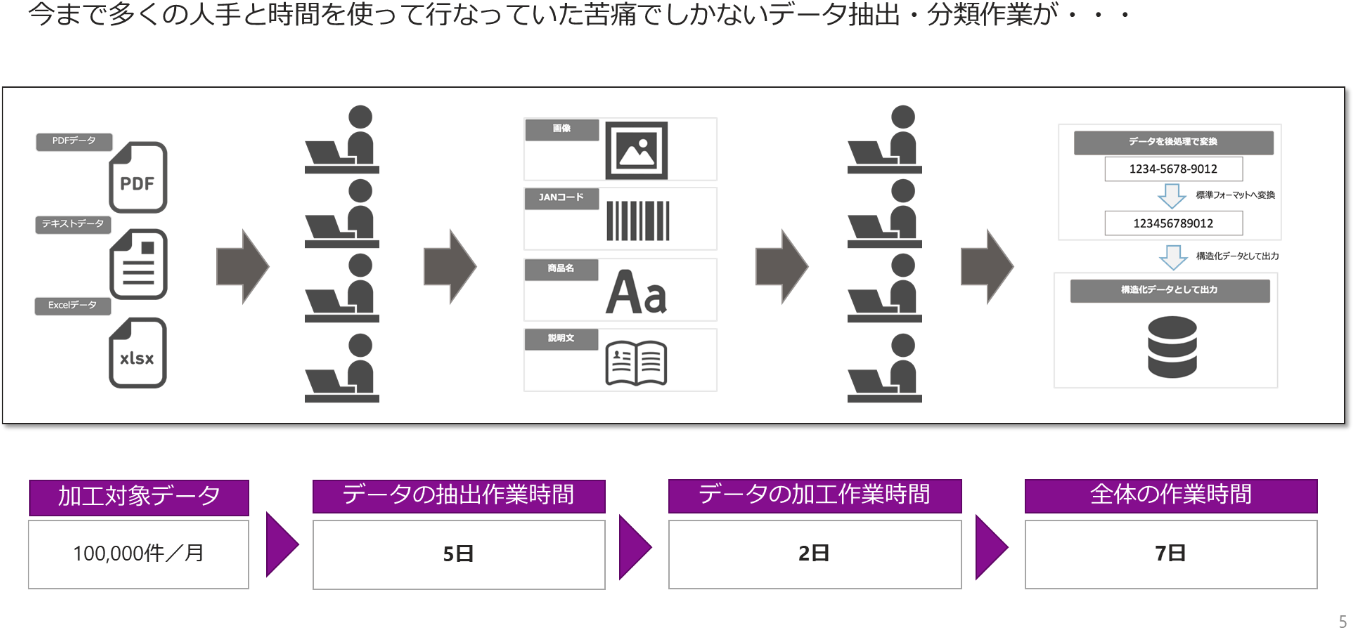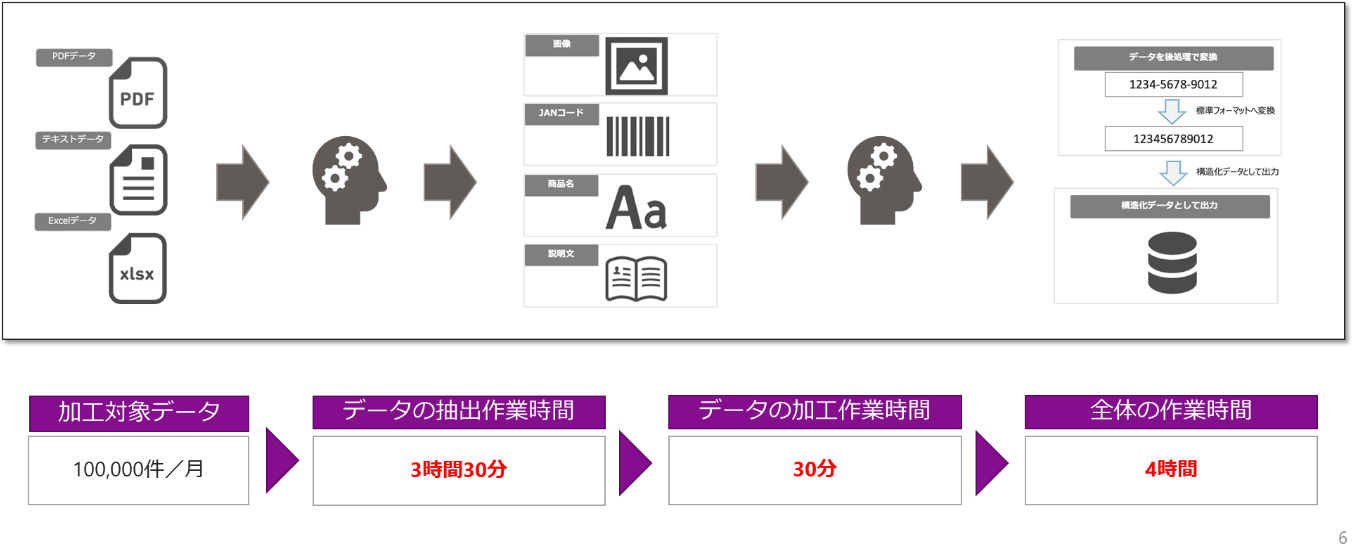Specifications/Technical Information
Create data assets that will be the axis of DX! Part 4 AI technology in use 2: Estimation and classification of additional product information

In the third installment, we featured AI technology 1 in use: automation of reading and extracting product attribute information. In the 4th installment, we will continue to feature AI technology (estimation and classification of additional product information) used in problem solving using AI.
Macnica provides a fully customized AI service, CrowdANALYTIX, and one of them is the provision of AI that automates product classification and registration.
CrowdANALYTIX for Product Master Database (CAX PMD) is a fully customized AI solution service that automates product registration operations. By combining machine learning, deep learning, and RPA, we classify products, extract attribute information, and structure product information with high accuracy. Since the data format, extracted product attributes, and product categories differ for each customer, we develop and provide individual solutions that are customized for each customer. Below are some of the processing processes of the actual solution. We will introduce the technology.
What CAX PMD Can Do
- Reading and extracting product attribute information
- Estimation and classification of additional product information
- Structuring and modifying product attribute information (post-processing)
Process 2: Estimation of additional product information
In the product additional information estimation process, the product attribute information extracted in the previous process is used to add new product attribute information that is not included in the original data.
For example, there is a process of judging the similarity of product names and product descriptions, estimating product categories, and assigning new product attribute information. This is similar to the processing of text information by the attribute classification AI model in the previous process, using a natural language processing AI model to learn the relationship between the product name / product description and the product category, and identify the category of the target product. It is estimated and assigned as new product attribute information. The process of estimating categories from sentences is more complex than the previous process of attribute classification AI models for text information, so a sufficient amount of data is required for learning. An example of a combination of AI models used in this process is a combination of fastText, LSTM and GRU.
Process 3: Structuring and modifying product attribute information (post-processing)
In this process, the product attribute information extracted and classified in the previous process is processed and output as structured data. Crop, rotate, resize, change file formats, rename files, add, remove, merge, and convert product text. These post-processing steps create the final output data.
The AI technology featured in Part 3 and Part 4 is just one example, but by combining data processing with multiple AI models in this way, it is possible to automate product registration operations. By systematizing the product registration work that has been done manually until now, we will save the man-hours in the current product registration work, and realize the efficiency of the organization's work and overwhelming productivity improvement.
CAXPMD provided by Macnica processes data in various formats using a combination of multiple AI models to classify products, extract product attribute information, and structure product information. We develop highly accurate AI models according to the type of format, and by combining them, we achieve highly accurate product attribute extraction. Therefore, we are achieving high versatility by sequentially developing and expanding new AI models according to the data.
With current technology, the only way to develop AI models with high accuracy is to individually select and apply appropriate algorithms according to different data preconditions (format, data format, etc…). This is proven as the no free lunch theorem *. Therefore, the Company do not take the approach of general-purpose processing with one AI model.
* No free lunch theorem ``It is theoretically impossible to have a general-purpose optimization strategy that performs well for all problems. Only if it is (specialized).”
Reference: No Free Lunch Theorems for Optimization David H. Wolpert and William G. Macready
Quote: Wikipedia
4th summary
In Part 4, we introduced AI technology used in product additional information estimation and classification.
This special feature will end with the 4th issue. In the retail, wholesale, and EC industries, product master data is an important asset that forms the basis for marketing and sales trend analysis. As marketing methods and data analysis methods become more sophisticated, it is becoming more and more important to increase the number of products handled by the company and to enrich product information.
Efficiently increasing the number of products, enhancing the information of each product, and building a product registration mechanism and system that keeps data always up-to-date are areas that many customers should prioritize in DX. is. In preparation for the upcoming DX, why not consider automating product registration operations with AI, which will have a major impact on your business?
Contact information
Macnica
In charge of CrowdANALYTIX
- TEL:045-476-2010
- E-mail:cax-sales@macnica.co.jp
